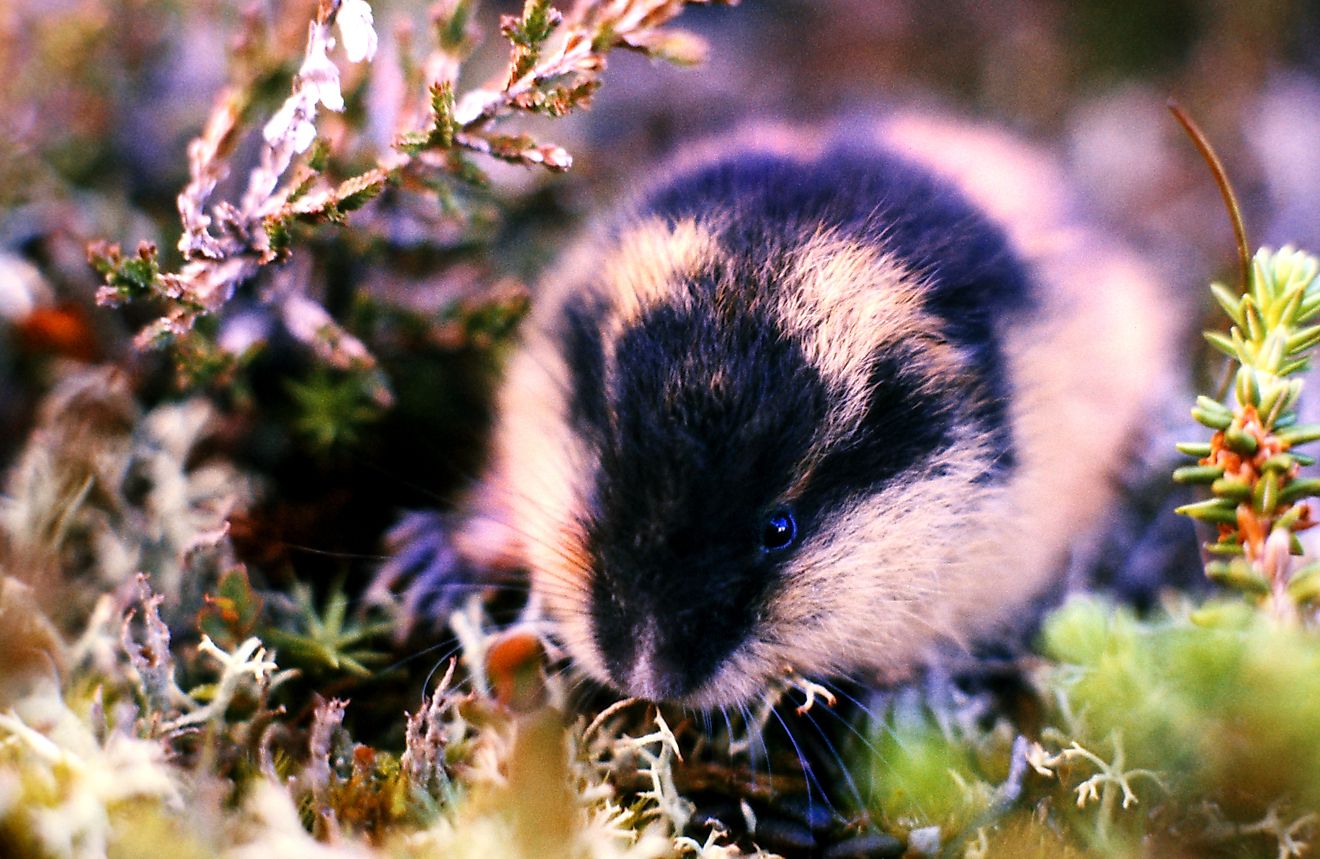Lemming Facts: Animals of the Arctic

5. Physical Description
The Lemming is a heavily furred and tiny rodent that is said to resemble a small guinea pig or a mouse. The three Lemming species native to the arctic are the Brown, Collared, and Ungava lemmings, according to Polar Life. Depending on the season, lemmings' coats may be grayish, brown, white, or mixed brown and white. The animals have short tails, clawed feet, and tiny ears hidden in fur. The lemming grows up to 6 inches in length, and an adult weighs from 40 to 112 grams, with the average mature weight being 78 grams, according to the Alaska Department of Fish and Game (ADFG).
4. Diet
The lemming is a herbivorous rodent. Its diet in the summer is comprised in large part by tender grass shoots, herbs, and sedges. In the winter, lemmings eat more frozen green plants, moss shoots, bark, willow twigs, and dwarf birch, according to the ADFG. There are reports that lemmings can become cannibalistic when there is food scarcity.
3. Habitat and Range
The three Arctic lemming species are spread throughout Alaska, Northern Canada, Siberia in the Russian Federation, Scandinavia, and across the wider Arctic Circle. The habitats in these places have tundra (treeless areas where there is permafrost) and open, sub-Arctic grasslands. The lemming makes its winter nests in lowland areas, where snow actually serves as an insulator and helps keep them warm. According to the International Union for Conservation of Nature (IUCN), the Collared, Brown, and Ungava lemming species alike are each classified as species of "Least Concern" among their Red List of Threatened Species. In fact, they are extremely widespread across their diaspora, with no immediate threats that could cause their extinction in the near future. Nonethless, local populations can have very erratic population shifts. According to the Canadian Wildlife Federation, lemming populations can fluctuate drastically within cycles, which peak every 4 years, and can even crash to levels near extinction. According to Polar Life, the population crash can leave as few as one lemming per hectare, from an initial 200 in the same hectare in a cyclical peak. This cycle, though unfortunate for the lemmings, helps the vegetation they dine upon to be replenished and allow for another population surge, according to CWF.
2. Behavior
The Lemming is a solitary animal. During winter, the lemming’s fur coat changes to white, and during the summer to brown. This color change serves as a camouflage mechanism that helps to help it hide from its many natural predators, which include snow owls, arctic foxes, and wolverines. Lemmings also may burrow in the snow during winter to keep themselves safe from winds and the cold. According to ADFG, a lemming is active during both the day and night, and doesn’t hibernate. A lemmings colony uses the same routes from nests to feeding spots, until their living areas are comprised of an intricate network of trails a few inches below the snow or land. Contrary to popular belief, lemmings do not commit suicide by jumping into the water. However, they will swim in water during mass migrations in search of food, and some drown in the process. Due to 1958 Disney documentary called White Wilderness, in which the filmmakers manually ran a pack of lemmings off of a cliff to make for good television a popular myth emerged that lemming has a tendency to mindlessly kill itself by jumping off of cliffs.
1. Reproduction
Lemmings only come together to mate or when caring for litters. Sexual maturity for a lemming begins at 3 weeks. Breeding occurs in the winter and summer, according to ADFG. After mating, the gestation period takes about three weeks, according to the A to Z of Animals. During summer, a female can give birth to 4 young ones, 4 to 5 in early to late winter, and 3 in the middle of winter. The young ones, weighing merely 3 grams at birth, open their eyes after 11 days, and can walk within 15 days. A lemming’s entire lifespan in the wild averages 2 years.







